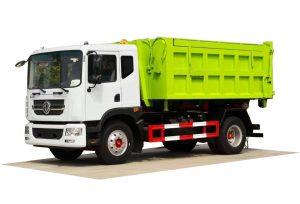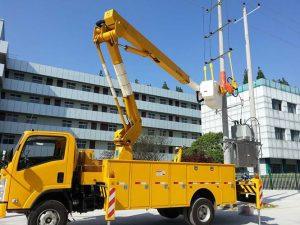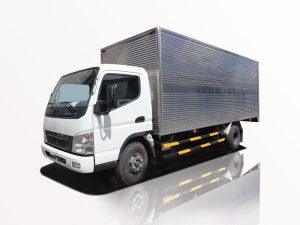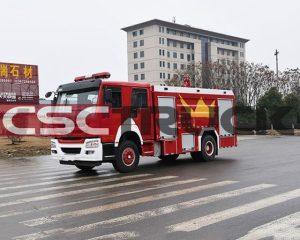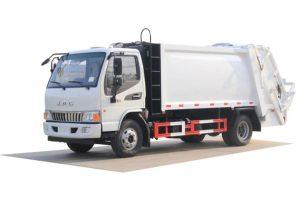Monday to Saturday - 8:00 -17:30
Understanding Fuel Tanker Capacity: A Comprehensive Guide
Fuel tankers are essential components in the transportation of fuel across various sectors, including mining, construction, and agriculture. Their capacity determines how efficiently they can deliver fuel, impacting logistics, costs, and more. This article delves into fuel tanker capacity, its implications, types of tankers, and key considerations in choosing the right tanker for your needs.
What is Fuel Tanker Capacity?
Fuel tanker capacity refers to the maximum volume of fuel that a tanker truck or vessel can hold. This can vary widely depending on the type, size, and configuration of the tanker. Understanding capacity is crucial for optimizing fuel transport logistics.
Importance of Fuel Tanker Capacity
Fuel tanker capacity plays a vital role in multiple areas:
- Cost Efficiency: Higher capacity can lead to lower transportation costs per unit of fuel.
- Logistics: Understanding capacity helps in planning routes and schedules.
- Environmental Impact: Larger tankers reduce the number of trips needed, potentially lowering carbon emissions.
Types of Fuel Tankers
Fuel tankers come in various designs, each with different capacities:
1. Road Tankers
Road tankers are used for transporting fuel on highways and local roads. They usually range from 1,000 to 10,000 gallons in capacity.
Common Sizes
| Capacity (Gallons) | Common Uses |
|---|---|
| 1,000 | Local delivery |
| 5,000 | Mid-range deliveries |
| 10,000 | Long-distance transport |
2. Marine Tankers
Marine tankers are used for transporting fuel over seas. Their capacities can be significantly larger, often exceeding 300,000 barrels.
Types of Marine Tankers
- VLCCs (Very Large Crude Carriers): Average capacity of 2 million barrels.
- Suezmax: Typically around 1 million barrels.
- Aframax: Ranges up to 800,000 barrels.
3. Specialty Tankers
These tankers are designed to transport specific types of fuel, including liquefied natural gas (LNG) and petrochemicals. Their designs are specialized for the materials being transported.
Capacity Insights
Specialty tankers often have capacities ranging from 15,000 to over 200,000 cubic meters.
Factors Affecting Fuel Tanker Capacity
When considering fuel tanker capacity, several factors come into play:
1. Regulations
Government regulations can limit the amount of fuel that tankers are allowed to carry based on safety standards and environmental concerns.
2. Design and Construction
The design of the tanker itself—its materials, shape, and safety features—can impact its overall capacity.
3. Weight Restrictions
Weight restrictions on roads or waterways may limit the amount of fuel a tanker can transport, regardless of its capacity.
Choosing the Right Tanker Capacity for Your Needs
Selecting the appropriate fuel tanker capacity involves analyzing your operational requirements:
1. Analyze Your Fuel Demand
Assess your fuel consumption patterns to determine how much fuel you will need on a regular basis. This evaluation helps in selecting the right tanker size.
2. Consider Distance and Route
The distance between your fuel source and destination can affect your choice. Longer distances may warrant larger tankers to minimize trips.
3. Evaluate Storage Facilities
Ensure that your storage facilities can accommodate the delivery size without exceeding safety limits. This is particularly important for large tankers.
Practical Examples and Tips
Case Study: A Construction Company
A mid-sized construction company requires regular deliveries of fuel for machinery and generators. They analyze their weekly fuel usage to determine that a 5,000-gallon tanker is efficient for their operations. This size accommodates both demand and the available storage at their facility.
Tip: Plan For contingencies
Always plan for unexpected increases in fuel demand. Having a slightly larger tanker can ensure you are not caught short during peak operational periods.
Environmental Considerations in Fuel Transport
Transporting fuel has environmental implications that should be taken into account:
1. Emissions
Larger tankers can lead to fewer trips, which in turn can lower overall emissions. Moreover, newer tanker designs feature advanced technology aimed at minimizing environmental impact.
2. Spills and Accidents
Proper handling and maintaining the integrity of the tanker are crucial to minimize the risk of spills, which can have catastrophic environmental consequences.
Maintenance of Fuel Tankers
Regular maintenance is vital for fuel tankers to ensure operational efficiency and safety:
1. Regular Inspections
Tankers should undergo routine inspections to check for leaks, structural integrity, and regulatory compliance. These checks ensure the longevity of the tanker.
2. Cleaning
Tankers should be cleaned regularly, especially when switching between different types of fuel. Residue from previous loads can contaminate new deliveries.
3. Upgrades and Modifications
Upgrading tanker technology and safety features can enhance capacity and efficiency. Investing in updated systems can pay off in the long run.
FAQs about Fuel Tanker Capacity
1. What is the average capacity of a road fuel tanker?
The average road fuel tanker can carry between 1,000 to 10,000 gallons, depending on its design and operational requirements.
2. How is fuel tanker capacity measured?
Fuel tanker capacity is generally measured in gallons (for road tankers) or barrels (for marine tankers), converting between these units may differ based on local regulations.
3. What factors should I consider when choosing a fuel tanker?
Consider regulations, transport distance, weight restrictions, and your specific operational needs when selecting a fuel tanker capacity.
4. How can I ensure my tanker is environmentally friendly?
Choose tankers with modern designs focused on reducing emissions and ensure regular maintenance and inspections to avoid leaks and spills.
5. What types of fuel can be transported in tankers?
Fuel tankers can transport various fuels, including diesel, gasoline, LPG, and specialty fuels like LNG, depending on their design.
6. How often should I maintain my fuel tanker?
Maintenance should be scheduled regularly based on usage, generally every few months, or following any significant delivery event. Routine inspections help prevent issues.


